The human mind is often likened to a malleable substance, easily influenced and shaped by the external world. Many factors, from environmental influences to social interactions, can shape our thoughts, behaviors, and attitudes, sometimes in ways that are unconscious and subtle. It’s a fascinating and complex field of study that many researchers, spanning various disciplines such as psychology, neuroscience, sociology, and behavioral economics, have dedicated their careers to understanding. This article seeks to delve into the reasons behind the human mind’s susceptibilities, exploring the various mechanisms that make us easily influenced. We will take a journey through the realms of cognitive biases, social conformity, emotion-driven decisions, and the role of media and technology in shaping our minds.
Our journey promises to offer you a comprehensive understanding of the different factors that contribute to the malleability of the human mind and the reasons behind them. The implications of this understanding extend far beyond academic interest—it can enhance self-awareness, improve decision-making, and even inform public policy and communication strategies. It’s a fascinating journey into the depths of human cognition that we are excited to share with you.
What Influences the Human Mind?
Table of Contents
- Cognitive Biases and Heuristics
- Social Conformity
- Emotion-Driven Decisions
- Media and Technology
- Frequently Asked Question
- Final Thoughts
- Sources
1. Cognitive Biases and Heuristics
The human mind, as sophisticated as it is, often relies on mental shortcuts or “heuristics” to make decisions and judgments. While these heuristics help us navigate the world efficiently, they can sometimes lead to cognitive biases, which are systematic errors in thinking that influence our decisions and judgments. Here we delve deeper into some of the most common cognitive biases and the reasons behind their formation.
1.1 Introduction to Cognitive Biases
Human cognition is a fascinating process, a complex interplay of numerous mental operations helping us make sense of the world around us. Our brains are continually receiving, processing, and interpreting a vast amount of information. This constant barrage of data, coupled with our limited cognitive resources, necessitates the development of mental shortcuts or “heuristics”. These heuristics enable us to make quick decisions without getting overwhelmed.
However, these shortcuts can sometimes lead us astray, resulting in systematic errors in our thinking known as cognitive biases. Essentially, cognitive biases are predictable patterns of deviation from rational judgement or objective standards, where our inferences about people, situations, or events may be illogical or skewed.
Why do these biases exist? Cognitive biases are thought to have evolutionary roots. They have developed as part of our cognitive machinery due to their survival benefits. For instance, the availability heuristic—our tendency to judge the frequency of an event based on how easily examples come to mind—may have been useful in our ancestral environments where quick decision-making could mean the difference between life and death.
But in our modern, complex society, these cognitive biases can sometimes lead us astray, making us vulnerable to errors in judgement, poor decision-making, and influence by others. For example, the confirmation bias, our tendency to search for and favor information that confirms our pre-existing beliefs, can lead us to overlook critical information, make erroneous decisions, or reinforce stereotypes and prejudices.
These biases operate largely outside our conscious awareness, making them especially difficult to recognize and counteract. However, by gaining an understanding of these biases and the ways in which they can affect our thinking, we can take steps towards reducing their impact and making more accurate, rational judgements. The following sections will delve into some of the most common cognitive biases and explore their influence on our thoughts and behavior.
1.2 Confirmation Bias
Confirmation bias is one of the most prevalent and impactful cognitive biases. It is the tendency to search for, interpret, favor, and recall information in a way that confirms our preexisting beliefs or hypotheses. This bias can make us selectively blind, leading us to overlook, dismiss, or even distort evidence that contradicts our beliefs while giving disproportionately more weight to evidence that supports them.
For instance, imagine you believe that a particular political party is more competent than others. When consuming news, you may unconsciously seek out and give more credit to articles that portray this party in a positive light, while ignoring or discrediting news that shows them in a negative light. This bias can inadvertently strengthen your initial belief, regardless of the objective truth.
The confirmation bias is believed to arise for several reasons. One is our inherent desire to avoid cognitive dissonance—the discomfort experienced when we hold two or more contradictory beliefs, values, or attitudes. By ignoring or dismissing conflicting evidence, we protect ourselves from this uncomfortable state.
Another explanation involves our brain’s energy efficiency. Our brain uses a significant amount of the body’s energy, and cognitive shortcuts like confirmation bias save energy by reducing the need for analytic thinking.
Confirmation bias can have serious implications. It can prevent us from thinking critically and objectively, hinder us from making informed decisions, and exacerbate social divides. This bias can also cause us to stick to harmful beliefs or behaviors, impede learning, and lead to poor outcomes in contexts such as business, healthcare, and education.
However, awareness of this bias is the first step towards countering its effects. This awareness can encourage us to seek out diverse perspectives, critically evaluate information, and be more open-minded and flexible in our thinking. By consciously counteracting confirmation bias, we can improve our decision-making processes and arrive at a more accurate understanding of the world.
1.3 Availability Heuristic
The availability heuristic is another powerful cognitive shortcut that our brains use to make decisions and judgments. It refers to our tendency to base our judgments on the information that is readily available in our minds, rather than considering all relevant data. In other words, we estimate the probability of an event or the frequency of a phenomenon based on how easily examples or instances come to mind.
This heuristic operates under the principle that if something can be recalled quickly, it must be important, or it must occur frequently. For example, after seeing news about a plane crash, people might overestimate the danger of air travel because the dramatic event is fresh in their minds. Similarly, words that are easier to pronounce or recall are judged to be more common and familiar than those that are more difficult to recall.
This cognitive shortcut likely evolved because, in many cases, relying on the information that comes to mind most easily is a fast and efficient way to assess probability. If we had to thoroughly analyze every decision or judgment we make, we would be paralyzed by indecision.
However, the availability heuristic can lead to systematic biases and errors in judgment. For example, highly emotional or dramatic events, such as natural disasters or terrorist attacks, tend to be more memorable, making us overestimate their frequency and risk. The same goes for information that is repeated often or that we have been exposed to recently.
Being aware of the availability heuristic can help us recognize when we might be making biased judgments or decisions. We can then try to correct for this bias by seeking out more comprehensive and balanced information. This is particularly important in situations where accurate risk assessment is crucial, such as in making health or safety decisions, or in settings where unbiased decision-making is necessary, like in the courtroom or in strategic business decisions.
1.4 Anchoring Bias
Anchoring bias is another pervasive cognitive bias that plays a significant role in decision making. It refers to our tendency to rely heavily on the first piece of information we receive (the “anchor”) when making decisions. Once the anchor is set, we then adjust our subsequent judgments based on this reference point, often insufficiently, resulting in skewed perceptions and decisions.
For instance, consider a negotiation over the price of a car. If the seller suggests a price first, say $20,000, this value acts as an anchor and influences the rest of the negotiation. Even if the car’s fair price is significantly lower, the buyer may end up paying more than they should simply because their judgment was anchored by the initially proposed price. The power of anchoring bias is such that it operates even when the anchor is irrelevant or arbitrary.
The anchoring bias is thought to occur due to the way our brains process information. When we make judgments, we tend to use heuristic shortcuts, starting from an initial value (the anchor) and adjusting from there. The adjustment is typically insufficient because we are averse to deviating too far from our initial values or beliefs.
The implications of anchoring bias are vast and varied. It can affect decisions in various domains, including financial decision-making, negotiations, purchasing decisions, and even medical diagnoses and treatment decisions. It’s been utilized in marketing where retailers anchor consumers with high suggested retail prices, making subsequent discounts seem more attractive.
Becoming aware of anchoring bias is the first step towards mitigating its influence. We can strive to resist the power of first impressions, seeking out additional information before making decisions, and consciously adjusting our judgments away from the anchor. Another strategy is to establish our own anchors before others have a chance to impose theirs, particularly in situations like negotiations. Lastly, creating decision-making processes that encourage objective analysis can also be beneficial.
1.5 Hindsight Bias
Hindsight bias, often referred to as the “knew-it-all-along” phenomenon, is a common cognitive bias that involves our perception of past events. It refers to our tendency, after an event has occurred, to overestimate our ability to have predicted or anticipated the outcome. In other words, we often falsely believe that we “knew it all along” when, in reality, the event or outcome was not predictable.
For example, after a sports game, someone might claim that they “knew” a particular team would win, despite the fact that they had no way of reliably predicting the outcome. Similarly, after a stock market shift, some investors might believe that they “saw it coming,” even though they made no such prediction before the event.
Hindsight bias is believed to stem from our need for certainty and predictability. Understanding the world in a way that makes sense to us is comforting, and believing that we could have foreseen events gives us an illusion of control, which is reassuring.
However, hindsight bias can have significant implications. It can lead to an oversimplification of cause and effect, an overconfidence in our predictive abilities, and a dismissal of the randomness of certain events. It can cloud our judgment in decision-making scenarios, leading us to underestimate risks and overestimate our own expertise. It can also have legal implications, as in court cases where jurors are asked to make decisions based on what a defendant should have known at a certain time.
To mitigate the effects of hindsight bias, it is important to cultivate an awareness of this bias and to appreciate the uncertainty and unpredictability inherent in many situations. Keeping a decision journal, where you record your predictions and decision-making processes, can be helpful in providing a more accurate record against which to compare outcomes. This allows for a more objective evaluation of your decisions and helps keep hindsight bias in check.
1.6 Implications and Mitigation
The human mind’s susceptibility to influence carries both advantages and drawbacks. This duality becomes particularly evident when we examine the implications of such influence and explore strategies to mitigate its negative aspects.
Implications
Positive Implications:
- Cooperation and Cohesion: The capacity for influence facilitates cooperation in group settings, enabling societies to function effectively. It helps maintain social order by promoting behavioral norms that are essential for harmonious co-existence.
- Learning and Growth: Influence plays a key role in learning, enabling the transfer of knowledge, skills, and cultural norms from one person or generation to another.
- Change and Innovation: Influence can spur change and innovation. Ideas spread through influence, often leading to societal advancements.
Negative Implications:
- Manipulation and Coercion: The ease with which minds can be influenced can also be exploited for manipulation and coercion. This is evident in propaganda campaigns, fraudulent marketing tactics, and cult indoctrinations, for instance.
- Overdependence on Authority: Influence can lead to an overreliance on authority figures or perceived experts, leading individuals to uncritically accept their views or decisions.
- Groupthink: High susceptibility to influence can lead to groupthink, where the desire for consensus and conformity in a group results in dysfunctional decision-making.
Mitigation
Recognizing the potential for negative outcomes, several strategies can be adopted to mitigate the harmful effects of undue influence:
- Promote Critical Thinking: Encouraging individuals to question information, consider alternate viewpoints, and make informed, independent judgments can help counter undue influence.
- Foster Media Literacy: In the digital age, information (and misinformation) spreads rapidly. Media literacy education can equip individuals with the skills to critically evaluate the information they consume, especially from social media and other online sources.
- Transparency and Ethical Guidelines: Institutions can adopt transparency measures and ethical guidelines to prevent manipulation and coercion. For instance, marketing tactics designed to unduly influence consumer behavior can be regulated.
- Encourage Diversity of Thought: Encouraging diversity of thought in group settings can prevent groupthink and foster more robust decision-making. This involves cultivating an environment where dissenting opinions are valued and considered.
While susceptibility to influence has its pitfalls, it is a fundamental aspect of human nature that can be harnessed constructively. With the right awareness and strategies, we can mitigate its negative effects and leverage its benefits to facilitate learning, cooperation, and positive social change.
2. Social Conformity
Social conformity refers to the behavior change that occurs as a response to the perceived group pressure. It demonstrates the extent to which individuals’ thoughts, feelings, and behaviors are influenced by others. This section will explore the concept of social conformity, its psychological roots, its influence on individuals and society, and the ways in which we can manage and use it constructively.
2.1 Understanding Social Conformity
Social conformity is a fundamental concept in social psychology that refers to the act of changing one’s behaviors, attitudes, or beliefs to align with those of a group or society. It is an inherent part of our social interactions, shaping our behavior and thinking in significant ways. Social conformity allows for the smooth functioning of society, but it can also lead to a suppression of individuality and the perpetuation of harmful norms.
The roots of social conformity lie in our evolutionary past. Humans, as social animals, have long relied on group living for survival. Conforming to the group offered safety, resource sharing, and increased chances of reproduction. Over time, this propensity for conformity became ingrained in our psychological makeup.
Social conformity can be seen in various forms, from simple tasks such as clapping after a performance because everyone else is doing so, to more complex scenarios such as adopting certain lifestyle choices or belief systems based on societal norms or expectations.
Two key psychological theories help explain why we conform: Normative Social Influence and Informational Social Influence.
- Normative Social Influence: This type of influence occurs when a person conforms to fit in with the group because they fear being socially rejected or want to be liked. This can lead to public compliance where a person outwardly conforms to fit in, even though they may privately disagree.
- Informational Social Influence: This type of influence comes into play when a person conforms because they believe the group is competent and has the correct information, especially in unfamiliar situations. This can lead to private acceptance, where a person conforms both publicly and privately because they genuinely believe in the group’s stance.
Understanding social conformity and the factors that drive it allows us to recognize when our behavior is being influenced by others and helps us to navigate social interactions more effectively. In the next sections, we will delve deeper into the types of social conformity, the factors that influence it, and its implications for individuals and society.
2.2 Types of Social Conformity
While the general definition of social conformity is the alignment of one’s behaviors, attitudes, and beliefs with that of a group, it is worth noting that conformity can take many forms and is influenced by a variety of factors. Here are the key types of social conformity:
Normative Conformity
This is the most common form of conformity, where individuals adjust their behaviors and attitudes to match those of a group because they want to fit in, be accepted, and avoid social rejection. It involves going along with the crowd to maintain social harmony and enhance one’s social standing. This type of conformity can often lead to superficial changes—individuals may publicly align with the group’s behaviors but privately maintain their original beliefs.
Informational Conformity
Informational conformity occurs when individuals adjust their behaviors and attitudes based on the information they receive from others. This usually happens in situations of uncertainty or ambiguity, where individuals
2.3 Factors Influencing Social Conformity
While social conformity is a common human behavior, the extent to which individuals conform can vary based on a myriad of factors. Below are some of the primary influences that determine the degree and type of conformity.
Group Size
Research indicates that as the size of the group increases, so does the pressure to conform. This is especially true up to a certain point (around 3-5 people), after which the impact of group size on conformity tends to level off.
Group Cohesion
The more cohesive a group – meaning the stronger the bonds between its members – the more likely its members are to conform to the group’s norms and values. This is due to the greater perceived importance of the group and the stronger desire to maintain membership within it.
Presence of an Ally
Having at least one ally in a group who shares the same view can significantly reduce the pressure to conform. This is because it provides validation for the individual’s views and divides the attention and pressure from the rest of the group.
Public vs. Private Response
People are more likely to conform when their behaviors or responses are public as compared to when they are private. The fear of social rejection or judgment is a powerful motivator in such cases.
Cultural Factors
Culture plays a significant role in conformity. Some cultures place a higher value on collective harmony and social order (collectivist cultures) and thus have higher levels of conformity. In contrast, cultures that value individuality and personal freedom (individualist cultures) may exhibit lower levels of conformity.
Personal Characteristics
Certain personality traits can influence the likelihood of an individual conforming. For example, individuals with high self-esteem or a high need for achievement may be less likely to conform. Conversely, those with a high need for affiliation or approval may be more likely to conform.
Ambiguity or Uncertainty
In situations of ambiguity or uncertainty, individuals are more likely to look to others for guidance, leading to higher levels of conformity. This is particularly evident in crisis situations where clear or immediate solutions are not apparent.
Understanding these factors can help individuals recognize situations where they might feel an increased pressure to conform and can assist professionals in fields like psychology, marketing, and leadership to predict and influence group behaviors more effectively.
2.4 Implications of Social Conformity
Understanding the implications of social conformity can be a powerful tool in comprehending both individual and group behavior. From personal identity formation to group dynamics, and societal structures, social conformity plays a pivotal role.
Individual Level
On an individual level, conformity can shape a person’s behavior, decisions, and sense of identity. Conforming to societal or group norms often facilitates social acceptance and inclusion. However, it may also lead to the suppression of individual desires, beliefs, or characteristics, particularly if these deviate significantly from group norms.
The desire to conform can sometimes lead individuals to make choices that are not in their best interest or contradict their values or beliefs. For instance, the pressure to conform can push young people into harmful behaviors like smoking or excessive drinking.
Group Level
At the group level, conformity contributes to cohesion, harmony, and efficiency. Shared behaviors and standards can improve cooperation and coordination among group members. However, excessive conformity can also stifle creativity, discourage dissent, and promote groupthink. Groupthink is a phenomenon where the desire for harmony or conformity in the group results in an irrational or dysfunctional decision-making outcome. It suppresses individual creativity, uniqueness, and independent thinking.
Societal Level
At a societal level, conformity helps to maintain social order and cohesion. Commonly accepted behaviors, codified into laws and social norms, enable societies to function harmoniously. However, conformity can also perpetuate harmful or outdated societal norms and impede social progress. For instance, in societies with rigid gender norms, conformity to these norms can contribute to gender inequality.
The implications of social conformity, therefore, are complex and multifaceted. While it fosters social harmony and cohesion, it can also suppress individuality, stifle creativity, and maintain harmful norms. In the next section, we will discuss how understanding these implications can guide strategies to harness the benefits of conformity while mitigating its potential harm.
2.5 Managing and Using Social Conformity
Understanding the nature and implications of social conformity is the first step towards managing its effects and using it constructively. Here are a few strategies to achieve this:
Promote Awareness and Critical Thinking
Awareness of social conformity and its influences can help individuals recognize when their thoughts or behaviors are being unduly influenced by others. Promoting critical thinking can also enable individuals to scrutinize the views or behaviors they are conforming to, encouraging independent thought and decision-making.
Foster Diversity and Inclusion
Diversity and inclusion in groups can counter the pressures of conformity by encouraging a variety of viewpoints and reducing the domination of a single norm or perspective. This can enhance creativity, innovation, and robust decision-making in groups.
Establish Healthy Group Dynamics
In group settings, encouraging open communication and creating an environment where dissent is welcomed and respected can help counter groupthink and promote healthier, more independent decision-making.
Harness the Positive Aspects of Conformity
While undue conformity can be detrimental, it also has positive aspects that can be harnessed. For example, the desire to conform can be leveraged to promote positive behaviors, such as healthy eating or exercise, through social marketing campaigns.
Encourage Self-Reflection
Encouraging individuals to regularly reflect on their values, beliefs, and behaviors can help them identify when they are conforming to external influences that do not align with their authentic selves. This can guide personal growth and development.
Managing social conformity is not about eliminating it—after all, it’s a natural part of being human and has important social functions. Instead, it’s about creating a balance where the positive aspects of conformity can be harnessed and its potential harm can be mitigated, fostering healthier individuals and societies.
3. Emotion-Driven Decisions
3.1 Understanding Emotion-Driven Decisions
Emotion-driven decisions are decisions that are primarily influenced by our emotional state rather than by objective or rational analysis. These decisions aren’t necessarily impulsive or irrational, but rather, they are the result of our emotional responses interacting with our cognitive processes. Our emotions often serve as signals, guiding our decision-making processes based on our past experiences and personal values.
Traditionally, emotions were viewed as impediments to rational decision-making. However, contemporary research suggests that emotions are integral to our decision-making processes. They help us evaluate and prioritize potential options, motivate actions, and signal relevant past experiences that may guide current decisions.
The field of neuroeconomics provides further insights into emotion-driven decisions. It combines neuroscience, psychology, and economics to understand how we make choices. It suggests that our brain has two systems at play during decision making: one is a fast, automatic, emotion-driven system, and the other is a slow, deliberate, logic-driven system. These two systems interact and influence each other in the decision-making process.
While it’s common to think of decisions as purely logical processes, recognizing the significant role emotions play in our choices is crucial. It can help us understand why we make certain decisions and how we might better manage our decision-making processes in the future. We will delve deeper into this topic in the following sections.
3.2 The Role of Emotions in Decision Making
Emotions play a critical role in decision making, often acting as an internal guide system that informs us about potential outcomes. Here are some ways in which emotions shape our decisions:
Emotional Valuation
Our emotions can act as a kind of value system, providing quick, automatic assessments of situations or options. For example, feelings of happiness or satisfaction from past experiences might guide us towards similar choices, while negative emotions like fear or regret might steer us away from certain decisions.
Risk Evaluation
Emotions can affect how we evaluate risks and rewards. For example, anxiety might cause us to overestimate risks and underestimate rewards, leading to more cautious decision making. On the other hand, positive emotions like excitement can make us more optimistic about potential rewards, leading us to take more risks.
Motivation
Emotions can motivate our decisions and actions. Strong emotions, whether positive or negative, often spur us to take action. For instance, feelings of passion or enthusiasm can lead us to pursue certain goals, while feelings of anger or indignation can drive us to advocate for change.
Intuition
Sometimes referred to as “gut feelings,” our emotions can signal intuitive responses that guide our decisions. These intuitive responses are often based on our subconscious processing of past experiences, learned patterns, or deeply held values and beliefs.
Social Influence
Emotions also influence our social decisions. Empathy, for example, can drive decisions to help others, while fear of social rejection can influence our choices to conform to group norms.
Understanding the role of emotions in decision making can help us navigate our choices more effectively. It can allow us to recognize when our emotions might be leading us astray and when they might be offering valuable insights. In the next section, we will explore how different emotional states can impact our decisions.
3.3 Impacts of Positive and Negative Emotions
Positive and negative emotions can significantly influence our decision-making process, often shaping our perceptions and judgments about potential outcomes. Here’s a look at how these two emotional states can impact our decisions:
Positive Emotions
Positive emotions like joy, satisfaction, or hope typically lead to an optimistic bias in our decision-making process. When we’re in a positive emotional state, we’re generally more likely to:
- Take Risks: Positive emotions can lead to a higher appetite for risk. The optimism fueled by these emotions can cause us to focus on potential rewards rather than potential downsides.
- Think Creatively: Positive emotions can also broaden our cognitive perspective, leading to more creative and flexible thinking. This can result in more innovative solutions and decisions.
- Trust Others: Positive emotions can increase our trust in others, impacting decisions related to social interactions, collaborations, or negotiations.
Negative Emotions
Negative emotions such as fear, anger, or sadness, on the other hand, can lead to a more pessimistic bias. When experiencing negative emotions, we’re generally more likely to:
- Avoid Risks: Negative emotions can make us more risk-averse. The focus shifts towards potential losses rather than potential gains.
- Think Narrowly: Negative emotions can narrow our cognitive perspective, leading to a focus on details and less creative or flexible thinking. This can result in more cautious and conservative decisions.
- Distrust Others: Negative emotions can decrease our trust in others, impacting decisions related to social situations and relationships.
It’s important to note that both positive and negative emotions can both help and hinder decision making. Positive emotions can lead to rash decisions if potential risks are overlooked, while negative emotions can result in missed opportunities due to an overly cautious approach. Recognizing the emotional state we’re in when making decisions can help us better assess the influences at play and make more balanced decisions.
3.4 Emotion and Rationality in Decision Making
The relationship between emotion and rationality in decision making is complex and nuanced. Traditionally, emotion and reason were seen as competing forces, with rationality often being perceived as superior for decision making. However, more recent perspectives suggest that emotion and rationality often interact and can even complement each other in the decision-making process.
Interplay Between Emotion and Rationality
Emotions are integral to decision-making processes as they provide immediate, automatic evaluations of circumstances, giving us a sense of how we should feel about potential outcomes. On the other hand, rational thinking involves deliberation and analysis, considering potential consequences logically and objectively. These two processes usually work together in decision making. Emotions can offer initial guidance, and rational thinking can help refine and direct these emotional responses.
Complementary Roles
While emotions can sometimes lead us astray, they can also serve as valuable heuristics or shortcuts in decision making, particularly when time is limited or information is lacking. Emotions also play a crucial role in decisions involving personal values or moral judgments.
Rational thinking, meanwhile, is valuable for complex decisions requiring detailed analysis or long-term planning. It helps us ensure that our emotional responses align with our broader goals and values and allows us to consider a wider range of potential consequences.
Balance is Key
The key to effective decision making is not to exclude emotion or rationality, but to achieve a balance between the two. This involves being aware of our emotional responses and understanding how they might be influencing our decisions, while also employing rational analysis to evaluate options and potential outcomes.
By recognizing and acknowledging the roles both emotion and rationality play in our decisions, we can navigate the decision-making process more effectively, ensuring our choices are both personally satisfying and objectively sound. In the next section, we’ll discuss strategies for regulating emotion-driven decisions to achieve this balance.
3.5 Regulating Emotion-Driven Decisions
Regulating emotion-driven decisions is an essential part of decision making. It involves recognizing the emotional influences on your decisions, understanding their implications, and managing them effectively. Here are a few strategies that can help regulate emotion-driven decisions:
Emotional Awareness
The first step in regulating emotion-driven decisions is to be aware of your emotions. This involves recognizing and acknowledging your emotional state, and understanding how it might be affecting your decisions. Regular self-reflection can be helpful in increasing emotional awareness.
Emotional Intelligence
Emotional intelligence refers to the ability to understand and manage your own emotions, as well as recognize and influence the emotions of others. Developing emotional intelligence can help you navigate emotion-driven decisions more effectively. It can help you to understand how emotions are influencing your decisions, to manage these emotions effectively, and to communicate and interact more effectively with others.
Cognitive Reappraisal
Cognitive reappraisal involves changing your emotional response to a situation by reinterpreting or reevaluating it. For example, if you’re feeling anxious about a decision, you might try to reinterpret the situation as a challenge rather than a threat. This can help you manage negative emotions and make more balanced decisions.
Mindfulness and Meditation
Practices like mindfulness and meditation can help regulate emotion-driven decisions by promoting emotional stability and reducing stress. Mindfulness involves focusing on the present moment without judgment, which can help you recognize and accept your emotional state without being overwhelmed by it.
Seek Multiple Perspectives
Getting input from others can provide additional perspectives that can help balance your own emotional influences. This might involve seeking advice from trusted friends, family, or mentors, or it could involve seeking professional guidance from a coach or therapist.
Regulating emotion-driven decisions isn’t about suppressing or ignoring your emotions. Instead, it’s about understanding and managing your emotions so that they contribute positively to your decision-making process. By adopting these strategies, you can make decisions that are both emotionally satisfying and objectively sound.
4. Media and Technology
4.1 The Influence of Media on the Human Mind
Media plays a pervasive and influential role in our lives. From traditional outlets like newspapers and television to digital platforms like social media, media shapes our understanding of the world, influences our attitudes and beliefs, and sways our decisions. Here are some ways media influences the human mind:
Information Framing
The way media frames information can greatly affect our perception and interpretation of events. For example, the same event can be presented in many different ways depending on the language, context, or angle the media outlet chooses to adopt. This can shape our understanding and judgment of the situation, often without us being aware of it.
Setting Social Norms
Media often reflects and reinforces social norms, impacting our sense of what is ‘normal’ or ‘acceptable.’ It can shape societal values and standards, influencing our attitudes and behaviors in subtle ways.
Spreading and Amplifying Information
Media has the power to spread information rapidly and widely, making it a potent tool for shaping public opinion. In particular, social media can amplify certain viewpoints or issues, influencing what we perceive as important or true.
Creating Emotional Connections
Media uses storytelling and emotional appeals to connect with audiences. These narratives can engage our emotions and imagination, making the information more memorable and influential. They can shape our attitudes, beliefs, and decisions based on how we emotionally connect with the information presented.
The influence of media on the human mind is both powerful and subtle. By recognizing and understanding these influences, we can develop more critical media literacy skills and make more informed decisions. In the next section, we will delve deeper into the persuasive techniques used in media.
4.2 The Power of Persuasion in Media
Media uses various persuasion techniques to influence audiences. These techniques, rooted in psychological principles, are designed to shape attitudes, beliefs, and behaviors. Here are some common persuasion techniques used in media:
Reciprocity
The principle of reciprocity suggests that people are more likely to give something when they receive something. In media, this could take the form of providing useful information or entertaining content, making audiences more likely to pay attention to messages or take desired actions.
Authority
Media often uses authority figures or experts to lend credibility to messages. This could be a celebrity endorsement, an expert opinion, or an official endorsement from a trusted organization. The presence of an authority figure can make messages seem more trustworthy and persuasive.
Social Proof
The principle of social proof suggests that people are more likely to do something if they see others doing it. In media, this could take the form of showing large numbers of people using a product, endorsing a viewpoint, or participating in an action. This can make audiences more likely to follow suit.
Scarcity
The scarcity principle suggests that people value things more when they are perceived as scarce. In media, this could involve messages about limited-time offers, exclusive opportunities, or impending crises. These messages can create a sense of urgency and make audiences more likely to take action.
Liking
People are more likely to be influenced by people or things they like. Media uses this principle by creating likable characters, aligning messages with audience values, or associating products with popular trends. This can make messages more appealing and persuasive.
By understanding these persuasion techniques, we can become more critical consumers of media. It allows us to evaluate media messages more objectively, helping us make more informed decisions. In the next section, we will explore the relationship between social media and cognitive bias.
4.3 Social Media and Cognitive Bias
Social media platforms, with their ability to connect millions and provide a constant stream of information, can both expose and reinforce cognitive biases. Here’s a look at how social media can play a role in shaping our beliefs, attitudes, and actions:
Confirmation Bias
On social media platforms, users often follow or interact with people and pages that share their viewpoints, creating a sort of ‘echo chamber’ where they are predominantly exposed to confirming perspectives. This reinforcement can strengthen confirmation bias, making us more likely to accept information that aligns with our existing beliefs and dismiss conflicting viewpoints.
Availability Heuristic
Social media platforms are designed to deliver the most engaging content, which often means the most dramatic or sensational. This can skew our perceptions of how common or likely certain events are, as more striking or memorable events are overrepresented in our feeds.
Groupthink
Groupthink occurs when people strive for consensus within a group, often neglecting to critically think or voice dissenting opinions. In online communities on social media, groupthink can be exacerbated as dissenting voices may be muted, ignored, or even attacked.
Filter Bubbles and Echo Chambers
Algorithms used by social media platforms often create personalized feeds based on a user’s previous interactions. This can lead to the creation of ‘filter bubbles’ or ‘echo chambers,’ where users are predominantly exposed to content that aligns with their existing beliefs. This can reinforce existing biases and limit exposure to diverse perspectives.
Recognizing these influences can help us use social media more critically and effectively. By actively seeking out diverse perspectives, questioning the information we encounter, and being aware of the potential for bias, we can mitigate the impact of these biases and make more informed decisions. In the next section, we’ll delve into how modern technology, including artificial intelligence, is increasingly involved in our decision-making processes.
4.4 Technology and Decision Making
Modern technology, including artificial intelligence (AI), plays an increasingly important role in our decision-making processes. While these technologies can offer numerous benefits, including increased efficiency and accuracy, they also introduce new challenges and potential biases. Here’s how technology influences decision making:
Data-Driven Decisions
Advanced technologies can analyze large amounts of data quickly and accurately, supporting data-driven decision making. This can improve decision quality by providing more comprehensive and precise information. However, it also raises questions about data quality, privacy, and interpretation.
AI and Machine Learning
AI and machine learning algorithms can process and learn from data to make predictions or decisions. They can enhance decision making by automating routine choices and providing insights from complex data. However, these algorithms can also introduce or reinforce biases if the data they learn from is biased.
Information Overload
Technology provides access to vast amounts of information, which can support informed decision making. However, the sheer volume of information can also lead to information overload, making it difficult to identify relevant information and make decisions.
Online Platforms and Algorithms
Online platforms use algorithms to personalize content, shaping the information we see and interact with. While this can make online experiences more relevant and efficient, it can also create echo chambers that limit exposure to diverse perspectives and reinforce biases.
Digital Decision Aids
Digital tools and platforms can provide decision aids, such as recommendation systems, decision trees, or comparison tools. These aids can support decision making by providing structured information or suggestions. However, they can also influence decisions by shaping how options are presented or prioritized.
In the next section, we will explore strategies to mitigate the impact of media and technology on our decision-making processes. This involves developing critical thinking skills, understanding the mechanisms behind media influence, and using technology responsibly.
4.5 Mitigating the Impact of Media and Technology
As we become increasingly reliant on media and technology, it’s important to develop strategies to mitigate their influence on our minds and decisions. Here are some strategies to consider:
Develop Media Literacy Skills
Media literacy involves understanding how media messages are created, distributed, and consumed. This includes recognizing persuasive techniques, understanding media ownership and bias, and evaluating information critically. Media literacy can help us make more informed decisions about the information we consume and share.
Diversify Information Sources
Diversifying our information sources can expose us to a wider range of perspectives and help us avoid echo chambers. This involves actively seeking out different viewpoints, engaging with different types of media, and questioning the information we encounter.
Understand and Question Algorithms
Online platforms use algorithms to personalize content. While these algorithms can make our online experiences more efficient, they can also limit our exposure to diverse perspectives and reinforce existing biases. Understanding how these algorithms work and questioning their outputs can help mitigate their influence.
Use Technology Responsibly
Using technology responsibly involves recognizing its benefits and limitations, and making informed choices about how we use it. This might involve setting limits on our technology use, protecting our privacy online, or using digital tools that support our goals and values.
Encourage Critical Thinking
Critical thinking involves questioning information, examining evidence, and considering different viewpoints. By encouraging critical thinking, we can make more balanced and informed decisions, even in the face of persuasive media messages or influential technologies.
By adopting these strategies, we can mitigate the impact of media and technology on our minds and decisions. This can help us navigate the digital world more effectively, make more informed decisions, and engage with media and technology in a way that supports our goals and values.
Frequently Asked Questions
Final Thoughts
Our understanding of why the human mind is so easily influenced is far from complete. It is a multifaceted issue that encompasses several domains, from cognitive biases and social conformity to emotion-driven decisions and the role of media and technology. By gaining a better understanding of these factors, we can strive towards greater self-awareness and improved decision-making abilities. Furthermore, this knowledge has vast implications in many areas, from improving our communication strategies to informing public policies.
Sources
- Kahneman, D. (2011). Thinking, Fast and Slow. New York: Farrar, Straus and Giroux.
- Asch, S. E. (1956). Studies of independence and conformity: I. A minority of one against a unanimous majority. Psychological Monographs: General and Applied, 70(9), 1–70.
- Bechara, A., Damasio, H., & Damasio, A. R. (2000). Emotion, decision making and the orbitofrontal cortex. Cerebral Cortex, 10(3), 295–307.
- Pariser, E. (2011). The Filter Bubble: What the Internet Is Hiding from You. New York: Penguin Press.



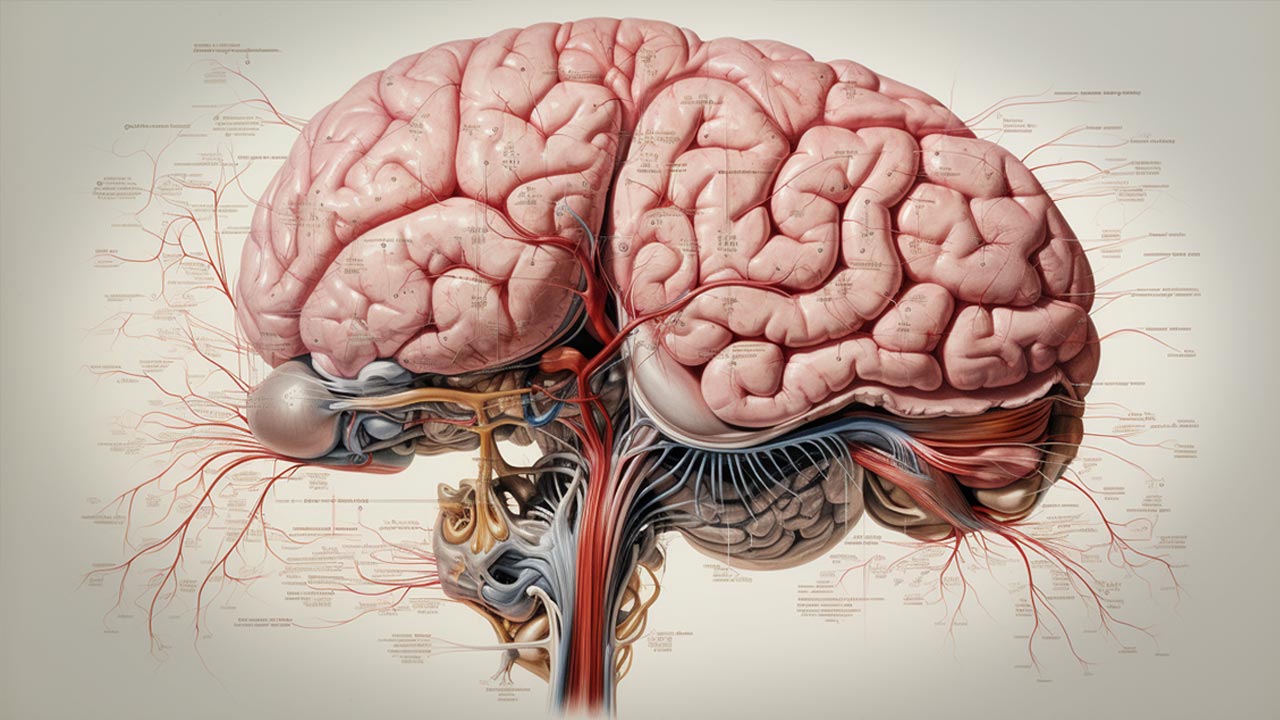
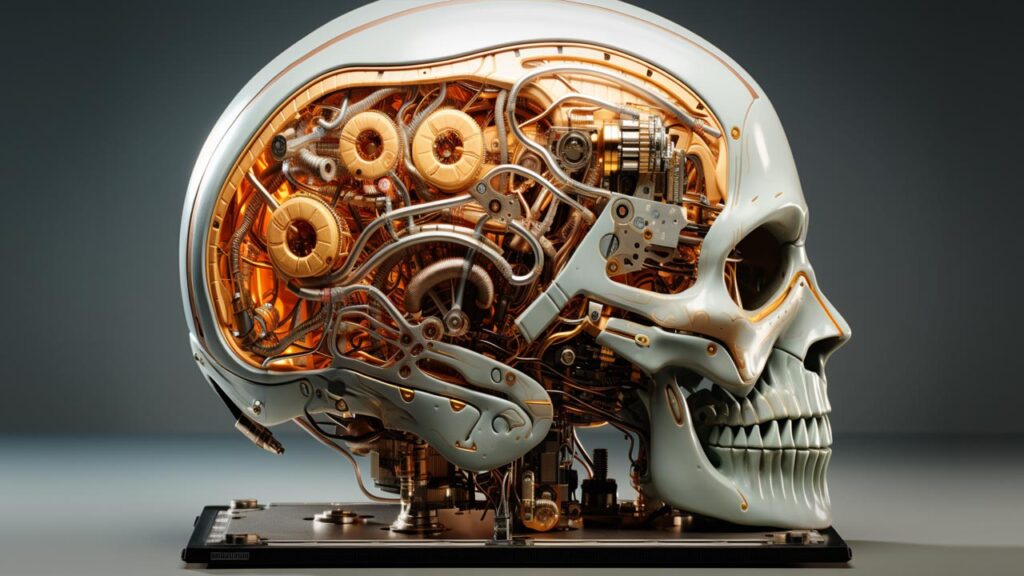
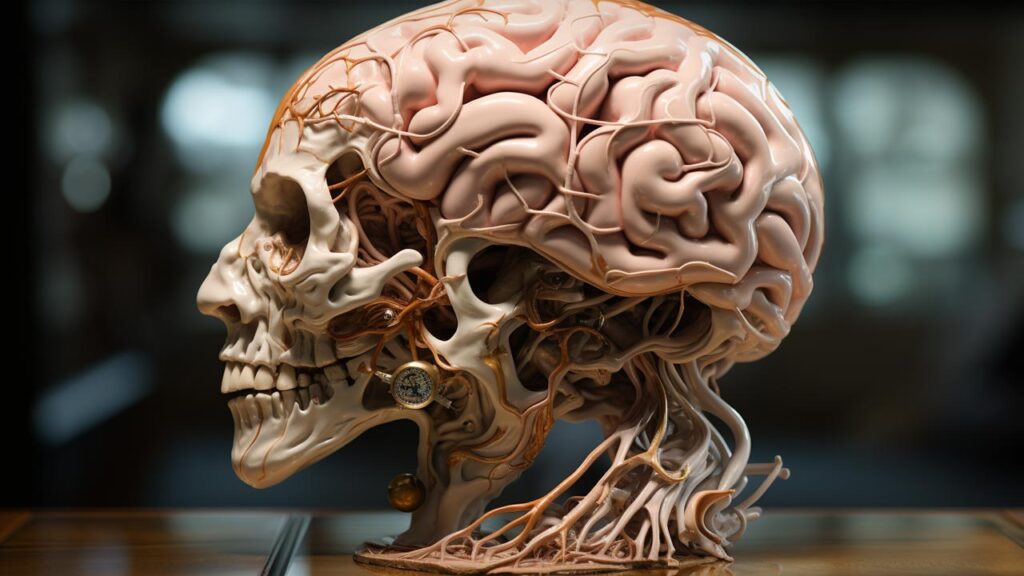


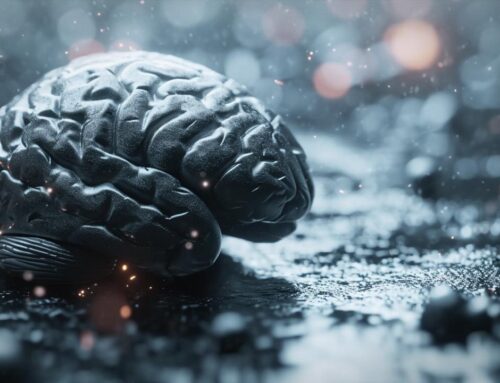
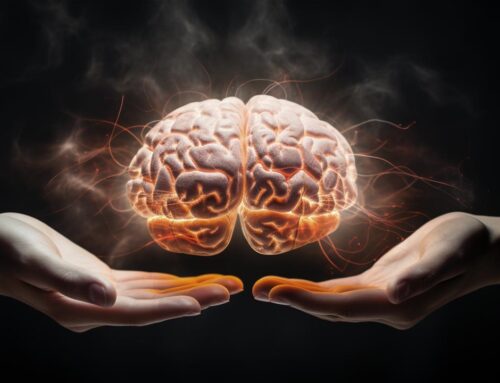
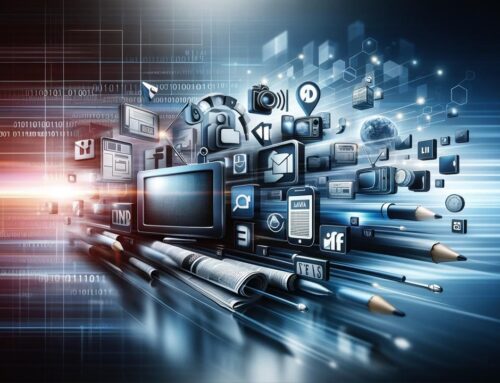
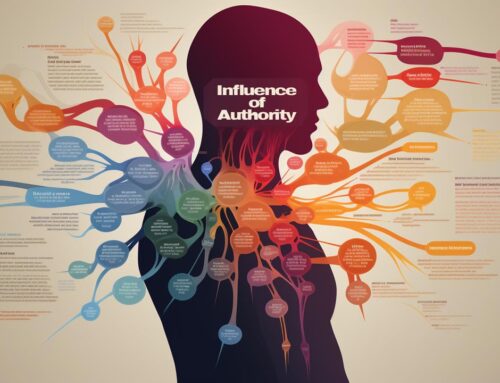


Leave A Comment